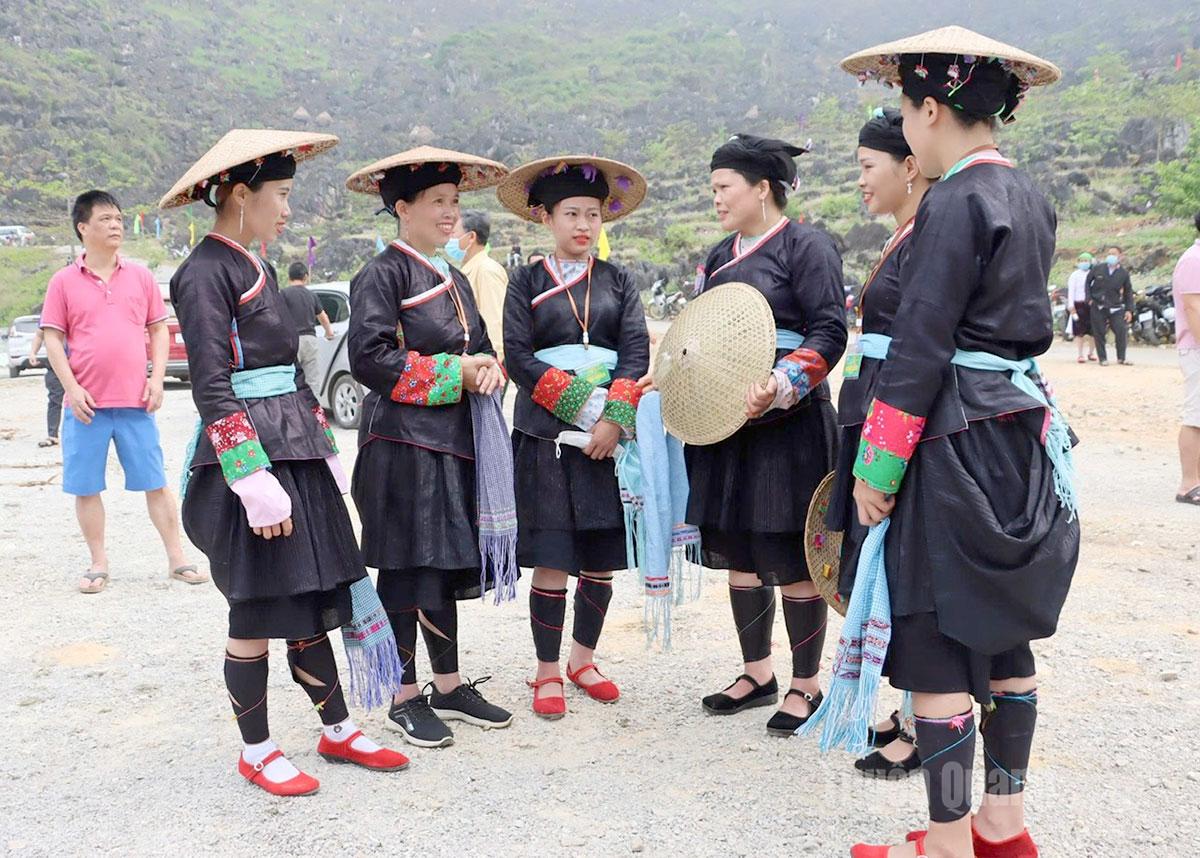Indigo-dyed shirt, a cultural symbol of the Giay ethnic group
The indigo-dyed shirt of the Giay people is more than just traditional attire – it stands as a quiet yet powerful symbol of cultural identity, heritage, and aesthetic refinement. Amid the lush green mountains of northern Vietnam, this modest garment weaves together generations of history, belief, and pride, embodying the spirit of a resilient community.
 |
| Giay girls in their traditional costumes. |
The Giay ethnic group has approximately 67,858 people, residing mainly in the northern mountainous provinces of Vietnam such as Lao Cai, Tuyen Quang, Lai Chau, and Cao Bang. Among these, the Giay community in Tuyen Quang contributes a rich and distinctive cultural identity to the region.
The traditional attire of the Giay people is simple in appearance yet harmonious and refined. Giay women typically wear an indigo-dyed shirt with a round neckline and front slit, free from elaborate embroidery. It is paired with a white undergarment, a red waist sash, and a neatly folded headscarf. Though not flamboyant, the subtle color combinations create a graceful and modest look, reflecting the gentle beauty of highland women.
Traditional weaving and embroidery have been passed down through generations of Giay women as a treasured cultural heritage. Using natural materials such as flax and cotton, they spin thread, weave fabric, and dye it with indigo extracted from forest leaves. The decorative patterns are not sketched out in advance, but are sewn from memory, drawn from cultural recollections deeply rooted in their upbringing. “Each traditional outfit can take up to a month to complete, but when I wear it, I feel like I’m carrying my ancestors on my back,” shared Ma Thi Nhan from Thuong Lam commune.
Nowadays, traditional clothing is not only worn in daily life but also remains an essential part of cultural festivals such as the Long Tong Festival, forest worship ceremonies, weddings, and coming-of-age rituals. In many Giay villages, the indigo-dyed shirt is passed down from mother to daughter like a sacred heirloom, symbolizing a deep love and reverence for their roots.
Recognizing the potential of community-based tourism, many Giay women in Na Tong, Ban Bien, and Phu Luu have established brocade weaving groups, creating souvenirs for visitors. Numerous homestays now incorporate cultural experiences into their offerings, introducing guests to traditional cuisine, the ‘phuon’ melodies, and interactive spaces where tourists can try on ethnic clothing, take photos, and experience fabric weaving. These activities have become unique highlights in the journey of exploring the northern highlands.
Local authorities are also actively promoting the development of ethnic cultural spaces right within the villages, aiming to preserve and revitalize traditional values dynamically, closely linked to the growth of sustainable and eco-friendly tourism.
The indigo-dyed shirt of the Giay people stands quietly amid the great forest, yet speaks volumes, serving as a testament to their determination to preserve cultural identity in the face of modern life. It is a vivid cultural emblem, highlighting Tuyen Quang’s journey toward becoming a sustainable, green, and culturally rich destination.
Duc Quy





READER COMMENTS